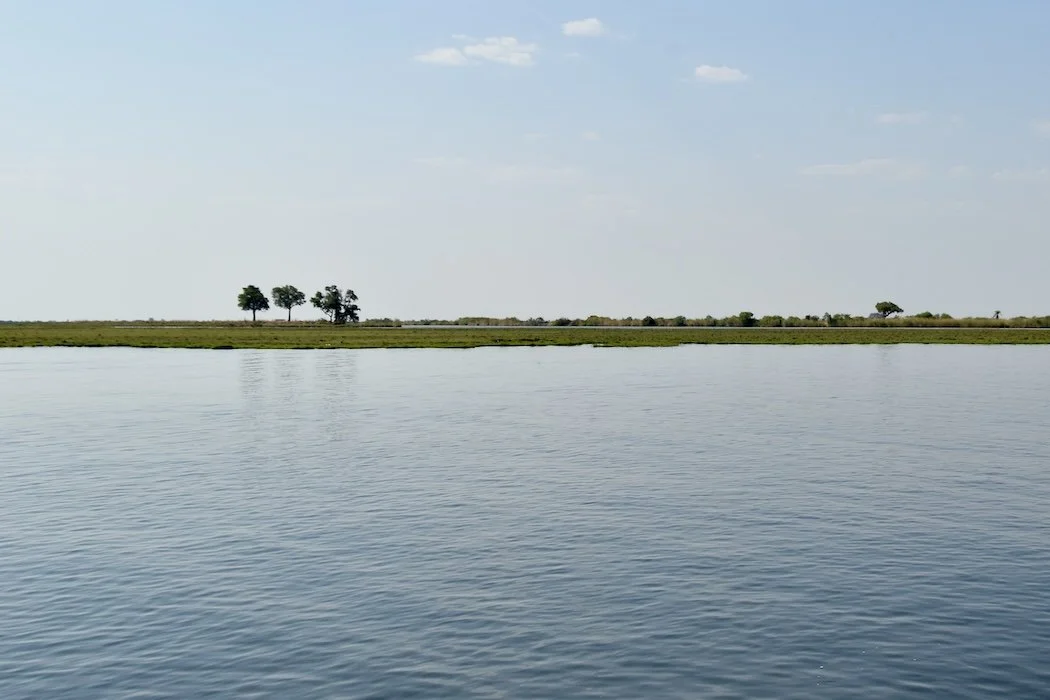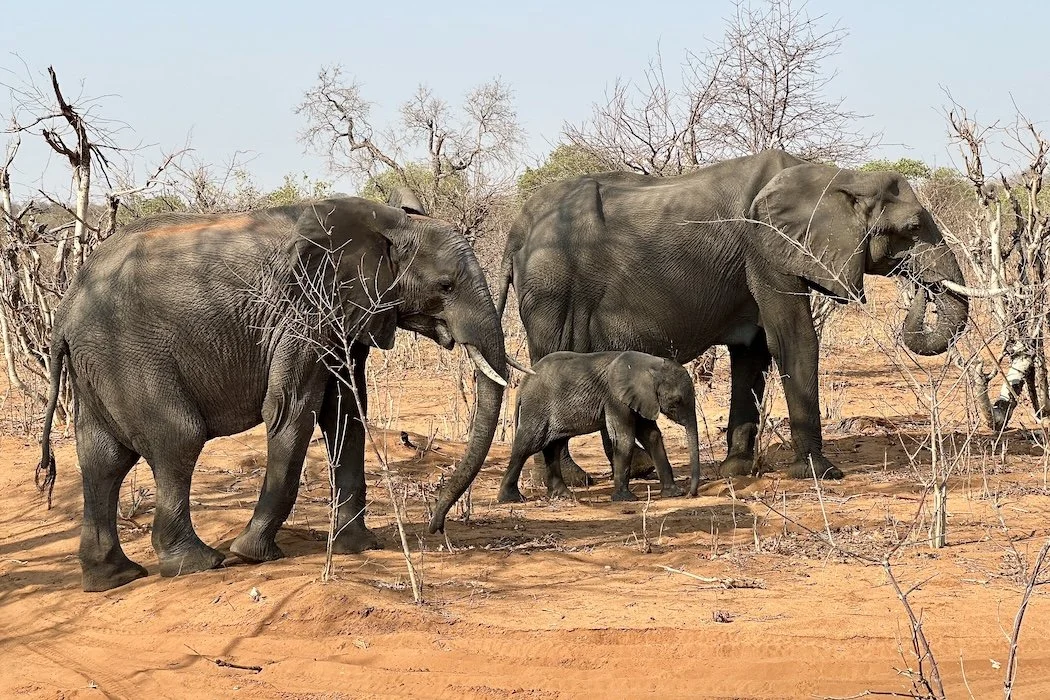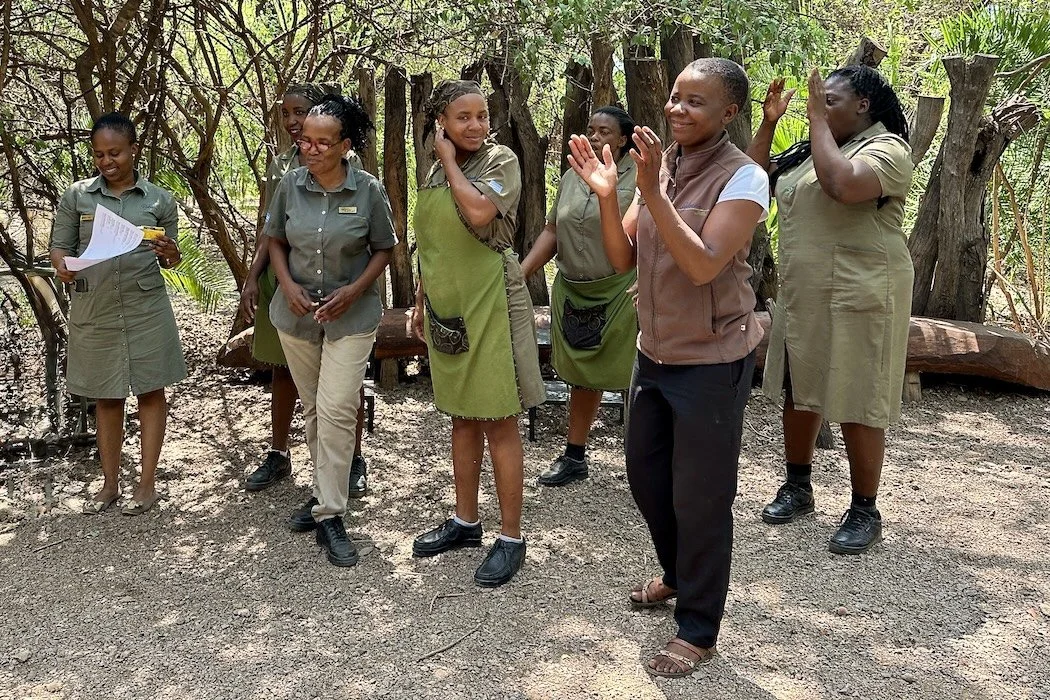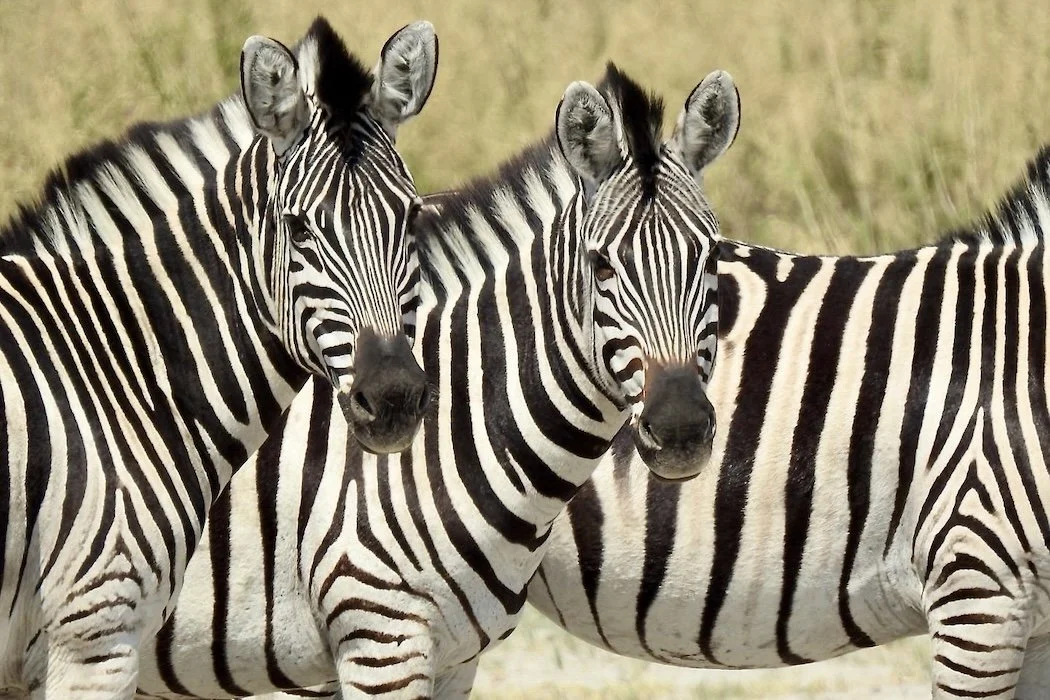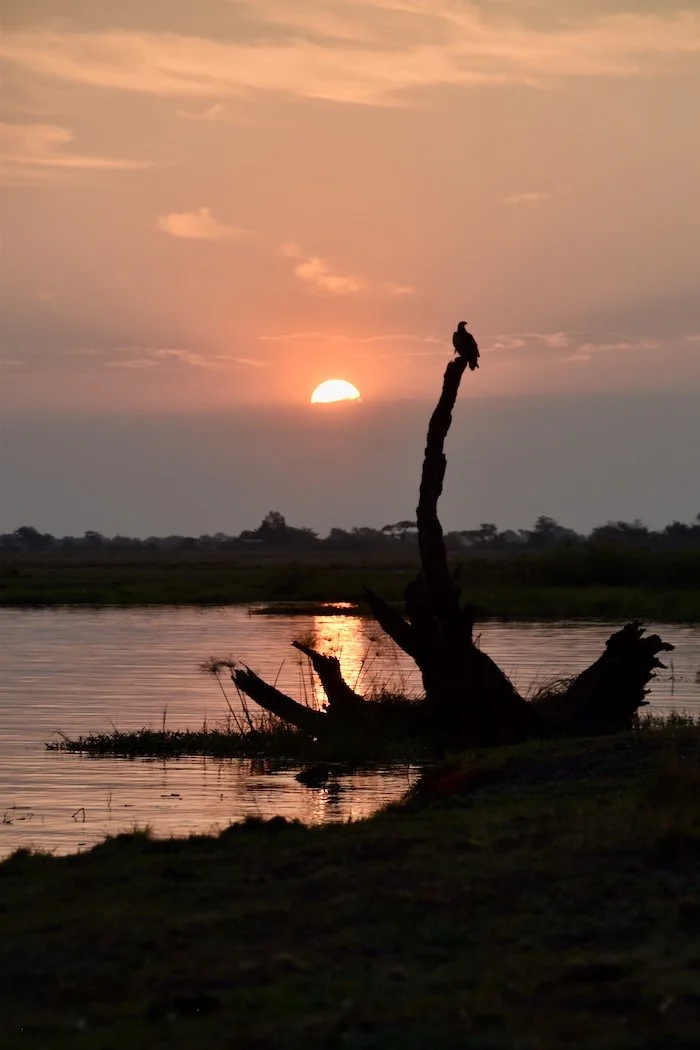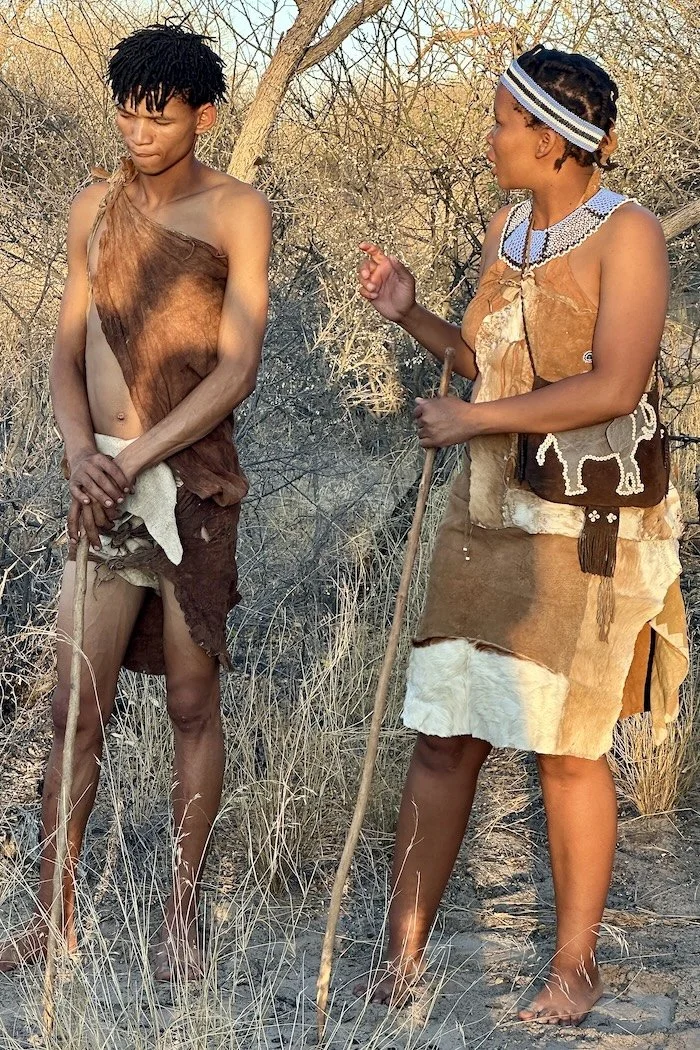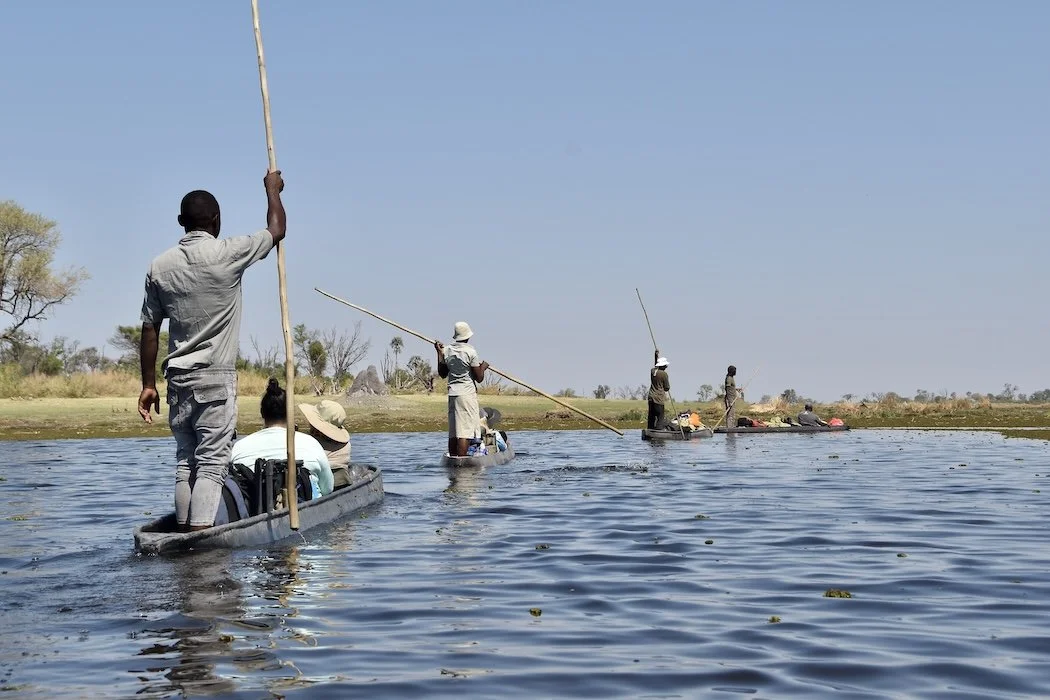Off-the-beaten-path African Road trip in Botswana
The Chobe River near the Four-Country Corner
“When you go on a road trip, the trip becomes part of the story”. – Steve Rushin
A road trip through Botswana is an experience involving many forms of transportation: van, safari jeep, boat, canoe, and small airplane. The travel, paired with the thrill of seeing abundant wildlife, makes for a true adventure. A good time to visit for easy animal viewing is at the end of the dry season in October. On the downside, it can be quite hot, even if the heat is dry; temperatures can reach 38C (100F). That, too, is part of the story.
Botswana is a sparsely-populated, landlocked country in southern Africa bordered by Zimbabwe in the east, South Africa to the south, Zambia to the north, and Namibia in the north and west. The flat landscape includes the Kalahari Desert, comprising almost 70%, and the Okavango Delta, which becomes a lush animal habitat during the seasonal floods that begin in November. Meaning “land of the Tswana”, Botswana is name after the ethic group that constitutes 80% of its population. Yet, these were the ancestral lands of the San “bushmen” and Khoi peoples, who are descended from the earliest-known inhabitants of southern Africa. They spoke click languages, hunted, gathered and traded over long distances. The Bantu-speaking Tswana migrated into the region around AD600.
The awe-inspiring landscapes of desert, delta, and grasslands protect some of Africa’s largest wilderness, home to a rich range of wildlife. The Chobe National Park contains the world’s largest concentration of African Elephants. They can be observed by boat on the Chobe River, which forms the border at the Four-Country Corner. There, the elephants share water and islands with water buffaloes, hippos, giraffes, alligators and many bird species including African eagles, and Marabou storks, one of the Ugly Five. Seen on land from rugged jeeps, the elephants amble peacefully past herds of impala, grazing kudus, banded mongooses, fast-moving baboon troops, lazy prides of resting lions and bashful giraffes. High up in Zambezi teak trees, vultures, another of the Ugly Five, wait.
In the Okavango Delta, the world’s largest inland delta, changes of transport can be desirable or necessary. This semi-forested wetland, crucial for animals and man, is a World Heritage Site. Flying over the delta in a small craft is an awe-inspiring experience. So is silently gliding through delta waters in a “mokoro” canoe steered by a local poler, past water lilies and salvinia weed on the way to a bush camp. Temperatures in the delta advise early morning and late afternoon bush walks to see herds of zebra, more grazing giraffes and elephants, twisted-horned elands, and a variety of water birds, including blue and white storks, and red African jacana.
Botswana emphasizes conservation, allowing few lodges in the vast landscapes, and promotes its cultural heritage. Yet, the San people, who still live in the Kalahari are becoming assimilated, though they share their way of life with visitors during sunset bush walks. Botswanan music is mostly vocal, with hand clapping, used gladly to sing a welcome for arriving visitors or around an evening campfire. Basket crafters create practical lidded storage, open carriers, and small grain vessels from mokola palm and local dyes, for their own use and for sale. Another part of the story is sampling local cuisine: seswaa, pounded goat or beef meat; maize porridge; sausages; fried dough bread; or mopane worms, the latter best downed with a locally-produced craft beer.
Don’t Miss:
A Chobe River cruise for unexpectedly ideal animal viewing, especially towards sunset.
Serendipity:
Surprises along the way- Traveling in a minibus along a rutted road and witnessing several ostrich families cross with their masses of young.
Lunch Tip:
Road trip lunches are often on the go; luckily many towns have good grocery stores and take-away opportunities.
Bedtime:
Chobe Bakwena Eco Lodge in Kasane for a wonderful glamping experience, including an outdoor shower.
Elephant Sands Bush Lodge near Nata, where elephants gather at the watering hole and amble by the safari tents.
Sedia Riverside Hotel in Maun on the Thamalakane River for comfortable rooms, a nice pool and very good food.
Thakadu Lodge Bush Camp near Ghanzi, for rustic accommodation, a welcoming pool and very good barbecue.
Subscribe for inspiration to have my posts drop directly into your inbox. *If you enjoyed what you read, please share this post with like-minded travelers.*
*All photographs are mine, taken with my Nikon D5600 or iPhone 14 Pro.*

